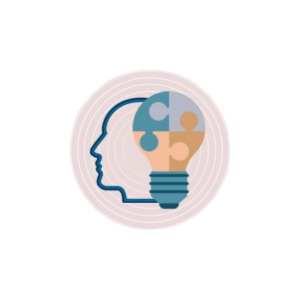If you are an avid reader of all things personality, you probably have heard of the Myers Briggs MBTI and Enneagrams. These are two of the most popular ways people assess themselves today. These tests and descriptions help people make important choices and decisions.
These decisions and choices range from career choices to strengths and weaknesses. So, is there a correlation between both personality assessments? Which really is the best?
In this article, we are going to look at the differences and similarities between the MBTI and the enneagrams. We are also going to look at their correlations. Then, we are going to look at what personality type is really the best.
MBTI and Enneagrams- Spotting the Similarities
First, we start with the similarities. Here are some of them.
1. Both Personality Assessments
The MBTI and enneagrams are both personality assessments. This means their aim is to make you understand yourself better. When you start reading more about the MBTI and the enneagrams, you will get more insights as to who you are and why you behave the way you do.
You also learn about your MBTI and enneagram type through personality tests. Here’s a pretty good test for the MBTI and a good one for the enneagrams.
2. Both Talk About Emotions and Logic
At the center of these two personality types is how we handle emotions and logic. They help you to see which ones you prioritize and how you use them to make decisions.
In the MBTI, your emotions and how you process are so important that they are given a letter. You are either a T (Thinker) or an F (Feeler).
In the enneagram of personality, the enneagrams are divided into three parts. These parts are classified based on how they access their emotions.
There are the anger, fear, and shame triad. Type 2, 3, 4 belong to the shame triad. Type 5, 6, 7 belong to the fear triad and type 8, 9, and 1 belong to the anger triad.
3. They Both Help You Make Great Career Choices
Both personality tests can help you make great career choices. They help you understand how your personality test responds and relates to different situations in the workplace.
They also help you discover if you are assertive or more likely to be a peacemaker. All this can contribute to how well you succeed in the workplace.
For example, here’s an article I wrote about the best INFP career options. Here’s another one I wrote about the best careers for enneagram type 7.
4. They Both Focus On Stress
Both of these types talk about stress and how we react to it. For the enneagrams, we are always in a fluid position. This means that we can look like more than one enneagram type when we are under stress.
For example, when type 8 is under stress, they start to look show some of the unhealthy traits of type 5.
| Enneagram Types | Under Stress |
| Type 1 | Unhealthy 4 |
| Type 2 | Unhealthy 8 |
| Type 3 | Unhealthy 9 |
| Type 4 | Unhealthy 2 |
| Type 5 | Unhealthy 7 |
| Type 6 | Unhealthy 3 |
| Type 7 | Unhealthy 1 |
| Type 8 | Unhealthy 5 |
| Type 9 | Unhealthy 6 |
The MBTI typology focuses more on stress and how we respond to it. The cognitive functions of each MBTI type often determine their reactions.
Stress is first handled by the first two cognitive functions. If prolonged, it might then be shifted to the last two functions. At this stage, the MBTI types could be said to be in a stress grip. This can make the MBTI types show unhealthy traits.
MBTI and Enneagrams- Spotting the Differences
While they might look alike in many ways, there are many differences between the MBTI and enneagrams. Let’s look at some of them.
1. Their Main Focus
The main focus of both personality tests is different. The MBTI is focused on telling you about the way you function. It tells you how you are bound to react to external stimuli. It also tells you how you can utilize this to your advantage at the workplace, in your family, or in personal relationships.
The MBTI tells you how you perceive and process information in the world today. It generally tells you this through your cognitive functions and stacks.
Knowing how you process this information will help you to become better at it. It will also help you to spot your flaws.
The enneagram of personality, on the other hand, is more interested in your core motivations and fears. It helps you understand how these motivations and fears have pretty much controlled your actions. It also shows you how you can grow by understanding why you act the way you do.
So in summary, the MBTI is more interested in how you function while the enneagram of personality is more interested in why you function this way.
2. Development
The MBTI and enneagram also differ in their explanation of how you get your personality type. 16personalities believes that there is a high likelihood that you are born with your MBTI type. This means that the MBTI personality is inherited rather than developed by the individual.
However, this is different with the enneagrams. It is believed that you can be born with a dominant type or it could have developed from childhood. When this happens, it’s mostly because of a childhood trauma suffered by a child.
3. Internal vs External
For the MBTI, it’s really about your external interaction. The four letters of the MBTI can be E/I, N/S, T/F, P/J. Each of these letters tells us how we react to several things.
For example, introversion or extroversion talks mostly about how we stay energized. Judging (J) and Perceiving (P) explains your preference for spontaneous activities or structured activities.
The enneagrams focus more on our internal inclinations. For example, it discusses the defense mechanisms we set to deal with our fears. It does not dwell too much on the external environment.
4. Wings vs T/A
The MBTI explains that there are two variants of each type. That is the assertive or the turbulent variants. They have the same cognitive functions but react slightly differently to the same situations.
The enneagrams, on other hand, talk more about wings. Wings refer to the two types that are beside the core type on the enneagram chart. These types influence the core type and produce variants of the same type.
5. 16 Personalities vs 9 Types
Another difference between the two personality tests is in the number of personalities. The MBTI believes there are 16 types of personalities. If you add the assertive and turbulent variants, that number climbs to 32.
The enneagrams believe that there are 9 enneagram types. However, if you add the wings to this number, the total personality type increases to 18.
Correlations between the MBTI and Enneagrams
So while there are a lot of differences, certain established correlations definitely exist between the MBTI types and the enneagram types.
Some MBTI types are more likely than others to be a certain enneagram type. Here are some of the correlations.
Enneagram Type 1- Judging MBTI Types
Enneagram type 1 is full of judging types. This is understandable as type 1 is more interested in being perfectionistic. This combines perfectly with these MBTI types that want a structured life.
Some of the types you might see include ISFJ, ESFJ, ESTJ, and ENFJ.
Enneagram Type 2- Mostly Feelers and Judging Types
Type 2 is mostly packed with MBTI types that have the F or J functions. This includes ESFJ, ENFJ, and ISFJ. This is understandable as compassionate people or feelers are more likely to care and try to help others.
Enneagram Type 3- Most Likely Thinkers
The enneagram type 3 is most likely going to be thinkers. However, you might see a few feelers in there. A notable exception would be the ENFJ who is often considered to be the protagonist. Typical examples here include ENTPs, ESTJs, and ESTPs.
Enneagram Type 4- Introversion and Feelers
This enneagram type is likely going to correlate with MBTI types that prefer introversion and are feelers. Typical examples are the INFJ and the INFP. Type 4s want to be unique and independent. INFJs are the rarest personality type.
It’s a perfect match.
| Enneagram Types | Most Likely MBTI Types |
| Enneagram 1 | ISFJ, ESTJ, ENFJ and ESFJ |
| Enneagram 2 | ISFJ, ISFP, ENFJ, ESFJ |
| Enneagram 3 | ENTP, ESTP, ESTJ, ENTJ |
| Enneagram 4 | INFJ, INFP |
| Enneagram 5 | INTP, INTJ, INFJ, INFP |
| Enneagram 6 | ISFP, ISFJ, ISTJ, ISTP |
| Enneagram 7 | ENTP, ENFP, ESTP, ESFP |
| Enneagram 8 | ENTJ, ESTJ, ENTP, ESTP |
| Enneagram 9 | INFP, ISFP, ISFJ, ESFJ |
Enneagram Type 5- Introversion and Thinkers
Enneagram type 5 is most likely going to correlate with thinkers or people who value introversion. However, it is possible to see some feelers in here. INFJs and INFPs also have significant numbers in this category. Typical examples here would be INTPs, ISTJs, and INTJs.
Enneagram Type 6- Introversion and Sensing
This type will likely correlate with MBTI types that prefer sensing and introversion. However, some thinkers can also fall into this category. This might include the INTJs. More typical examples will include the ISFP, ISFJ, ISTJ, and ISTP.
Enneagram Type 7- Extroversion and Perceivers
This type will likely correlate with MBTI types prefer extroversion and perceivers. Typical examples here include ENTPs, ESFPs, ENFPs, and ESTPs.
Enneagram Type 8- Extroversion and Thinkers
This type correlates with MBTI types that prefer extroversion and thinking. Typical examples here include the ESTJ, ENTP, ESTP, and the ENTJ. However, there are more type 8s among ESTJs and ENTJs than any other personality type.
Enneagram Type 9- Introversion and Perceivers
This type correlates more with MBTI types that prefer introversion and perceivers. However, type 9s can come from anywhere on the MBTI map. Typical examples include INFP, ISFP. You might also see some ISFJ and ESFJ in the mix.
MBTI and Enneagrams- Which One is Better?
So which of these personality assessments is better? When it comes to knowing how you function, then you should use the MBTI assessment. When it comes to knowing why you function, you should use the enneagram of personality.
However, for a complete understanding of yourself, you should use both assessments together. That will give you the complete package.

































1s under stress are unhealthy 4s, not 3s.
Hello Sheila, you are absolutely right. Thank you for spotting that!